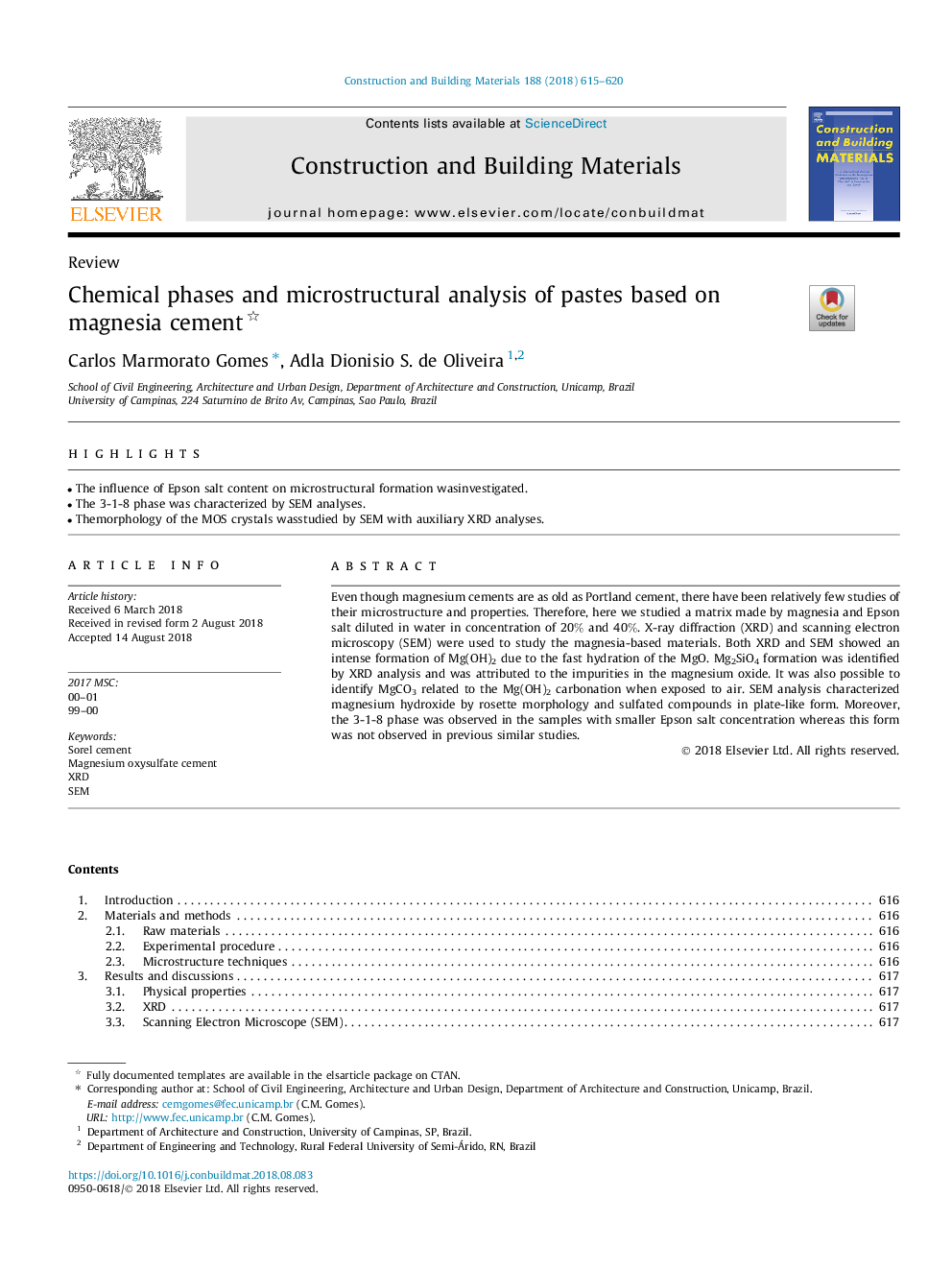| Article ID | Journal | Published Year | Pages | File Type |
|---|---|---|---|---|
| 10131768 | Construction and Building Materials | 2018 | 6 Pages |
Abstract
Even though magnesium cements are as old as Portland cement, there have been relatively few studies of their microstructure and properties. Therefore, here we studied a matrix made by magnesia and Epson salt diluted in water in concentration of 20% and 40%. X-ray diffraction (XRD) and scanning electron microscopy (SEM) were used to study the magnesia-based materials. Both XRD and SEM showed an intense formation of Mg(OH)2 due to the fast hydration of the MgO. Mg2SiO4 formation was identified by XRD analysis and was attributed to the impurities in the magnesium oxide. It was also possible to identify MgCO3 related to the Mg(OH)2 carbonation when exposed to air. SEM analysis characterized magnesium hydroxide by rosette morphology and sulfated compounds in plate-like form. Moreover, the 3-1-8 phase was observed in the samples with smaller Epson salt concentration whereas this form was not observed in previous similar studies.
Related Topics
Physical Sciences and Engineering
Engineering
Civil and Structural Engineering
Authors
Carlos Marmorato Gomes, Adla Dionisio S. de Oliveira,
